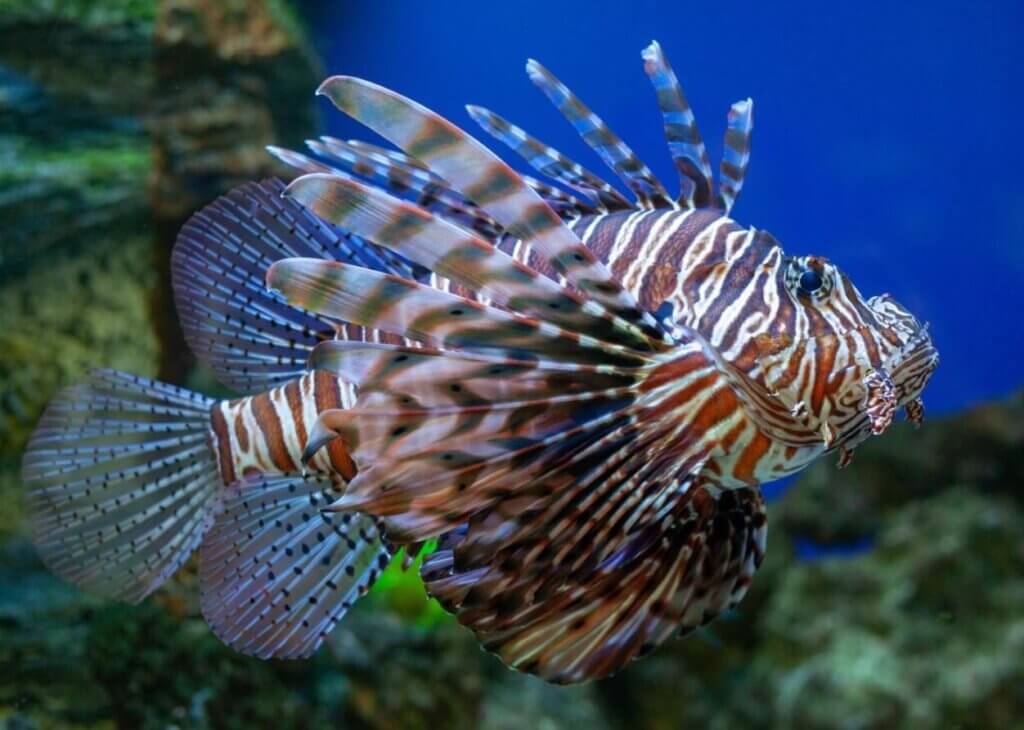Dangerous marine animals: Of all the organisms that exist on earth, humans are probably the most dangerous. They’re already done so much on this planet, but it doesn’t look like they’re going to stop. People cut down forests, drain rivers, and affect the climate. But they are still afraid to meet one-on-one with some animals. Especially if it’s a marine animal.
After all, in the water, a person is most vulnerable, he /she is not adapted to life in this environment. Many marine animals pose a threat to life, but most of them become aggressive only at the moment of protection. If you do not touch or attract their attention, then you can avoid misfortune.
This is the list of the 10 most dangerous marine animals in the world
1. Shark
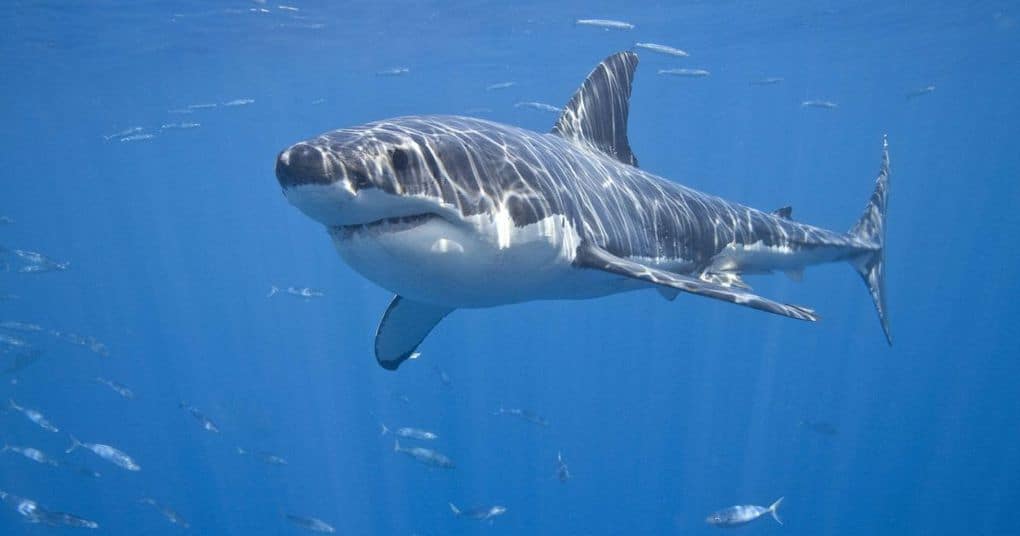
The shark has an elongated body, in length, it can reach from 17 centimeters to 20 meters. There are many varieties, all of them have a different appearance. Even someone who has never seen a shark will be able to imagine it. The shark is a predator, it feels the prey well, attacks it.
A person will not be able to survive after a fight with a shark. The amazing thing is that the shark doesn’t always attack, despite being a great hunter. There are cases when, after watching the victim, it swam away without touching him/ her. Sharks live in all oceans and climate zones. They can survive even in freshwater.
2. Sealion
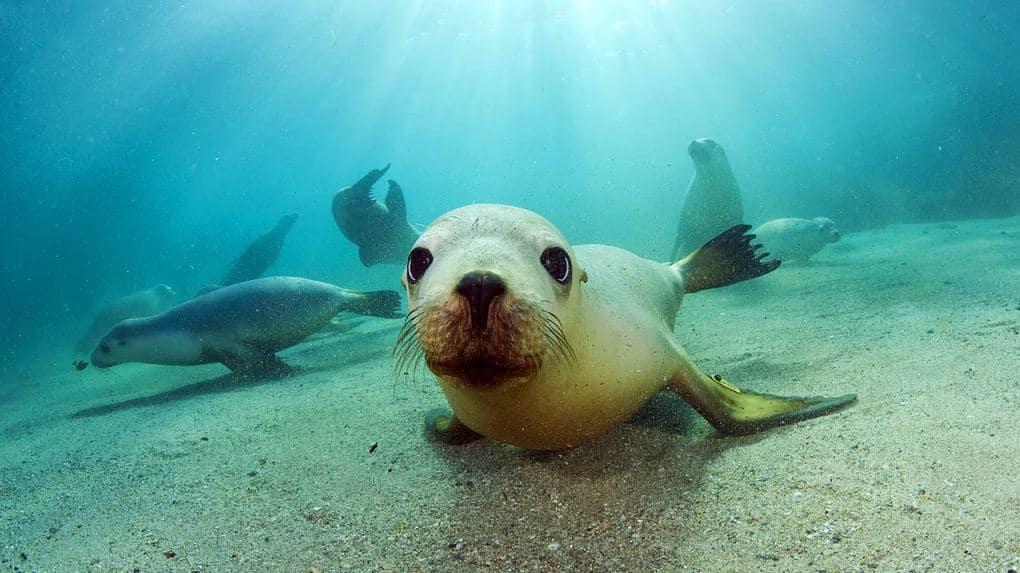
Sea lions weigh from 100 to 300 kilograms, their length is from 1.8 to 3 meters. They have long flippers, a large belly, a small elongated muzzle, and large eyes. Their body is covered with hairs, some of them have a similar mane, for which they were called sea lions.
They can often be found in dolphinariums, they participate in performances and cause only positive emotions in people. But it is better not to meet them in nature. These are fierce predators, they must provide themselves with a large amount of food, and they will not refuse to eat a person. They live in the waters of the Pacific Ocean.
3. Box jellyfish
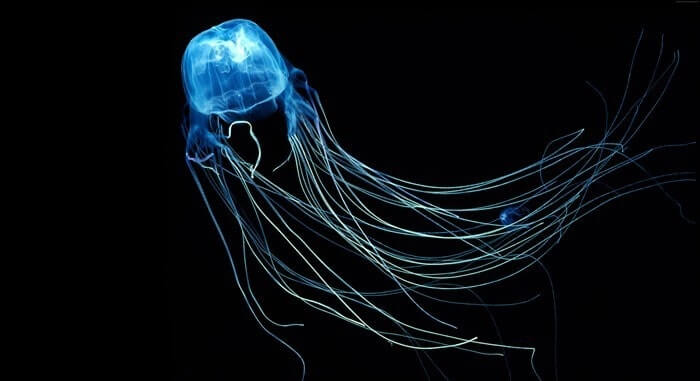
The medusa’s dome of Box jellyfish is small, matching the size of a basketball ball, but its tentacles can extend up to 4 meters in length. It has eyes, It can see the surrounding space. It has a transparent or bluish color, merges with water, so it is dangerous and is completely invisible in the water. A jellyfish tentacle burn causes breathing difficulties. A person can go into a state of shock and drown.
The symptoms of jellyfish poisoning are similar to those of ordinary poisoning. If you are stung by a jellyfish, you need to take an antidote immediately. Jellyfish don’t attack people, they defend themselves when they sense danger. Therefore, if you like to relax in the seas of the Pacific Ocean, be careful.
4. Red lionfish
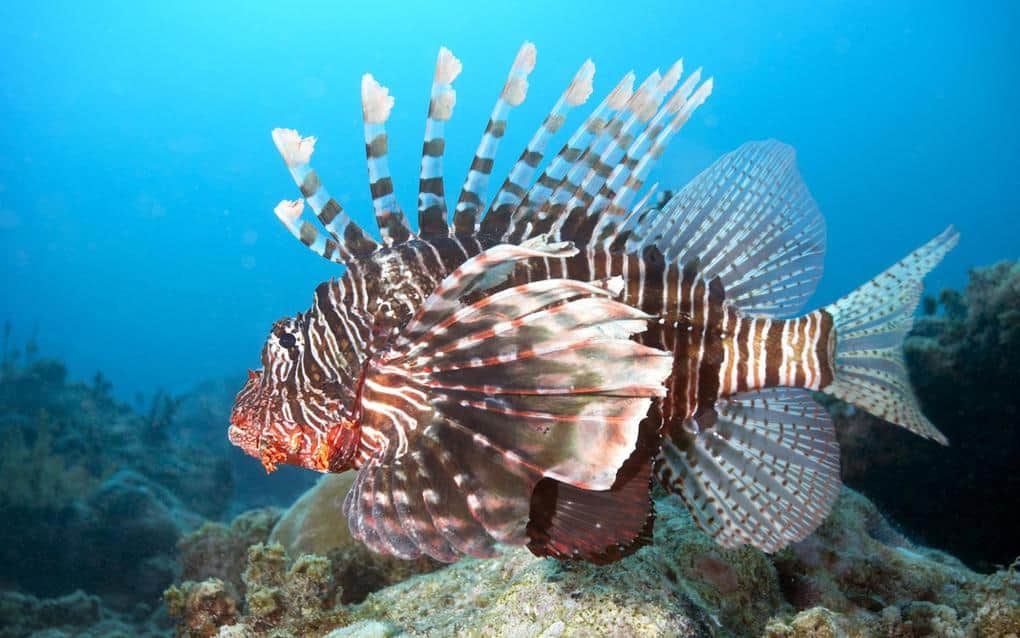
Red lionfish is an extremely beautiful fish. It is quite small, up to 30 centimeters in length, its fins are long and fan-like. There are sharp needles with poison hidden in them. If a lionfish stings a person, then he /she will feel unwell, he /she will show signs of poisoning. If the lionfish is pricked several times, it will not be able to get out of the water on its own.
The fish has a very bright color as if it warns that it is very dangerous. But people do not think about it, they want to touch a creature of unprecedented beauty. It is not uncommon for fish to be disturbed on purpose, for example, while swimming or diving. Its habitat is the Pacific and Indian Oceans.
5. Saltwater crocodile
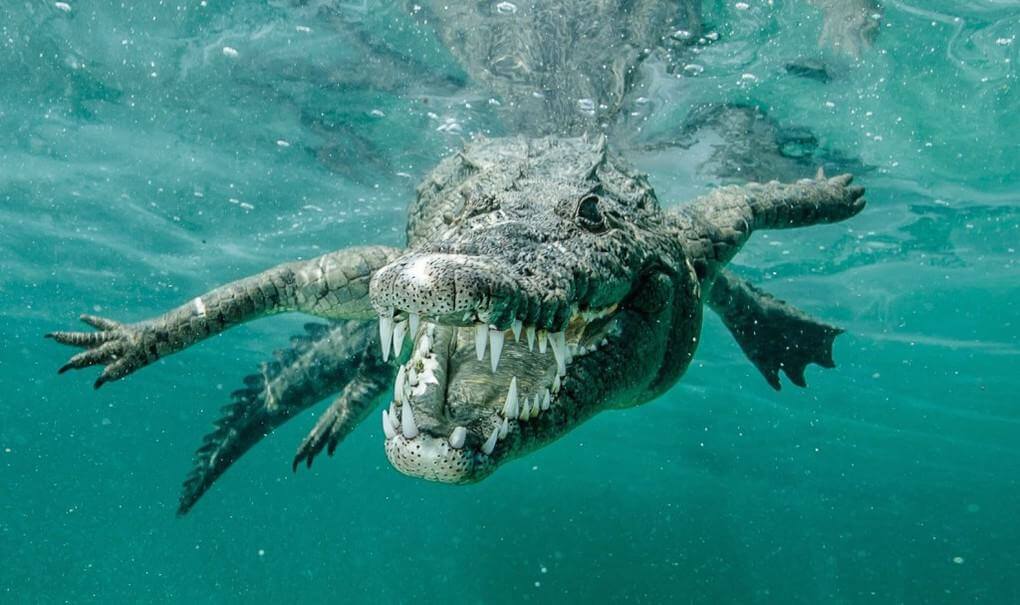
Saltwater crocodiles are large marine animals. Their length varies from 3 to 7 meters, and their weight can reach 1000 kilograms. They have an elongated head, powerful jaws. The body is covered with scales. Depending on the species, they are dark green and light green in color, with or without spots. Crocodiles are very dangerous to humans.
Every year, 2,000 people die when they meet them. Crocodile feeds on small and large animals, can fill up the buffalo. A person who meets a crocodile on the way simply has no chance. This animal perceives humans as food, usually hunts during the day. It hides and waits for the victim to come closer, then knocks it down with its tail or grabs it with its teeth. Crocodiles live along the coast of the Indian Ocean.
6. Pufferfish
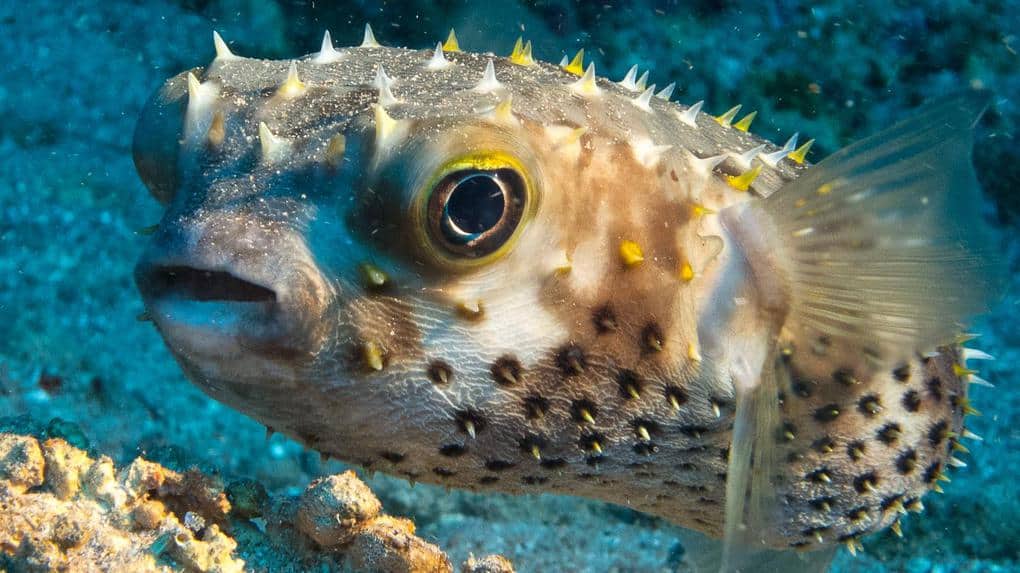
In fact, this is not the name of the animal at all, this is the name of a dish made from fish. The Pufferfish itself is not dangerous to humans, only if you do not try to eat it. This dish is common in Asia and Japan. It is very expensive, a portion made from one fish can kill about 40 people. This dish is appreciated for its unsurpassed taste and relaxing effect.
It can bring a person to a state of euphoria. It feeds on poisonous starfish and is therefore highly toxic. It is impregnated with tetrodotoxin. The poison affects the muscles, paralysis and breath retention occur. There is almost no chance of survival unless you immediately connect with a doctor.
7. Moray eel
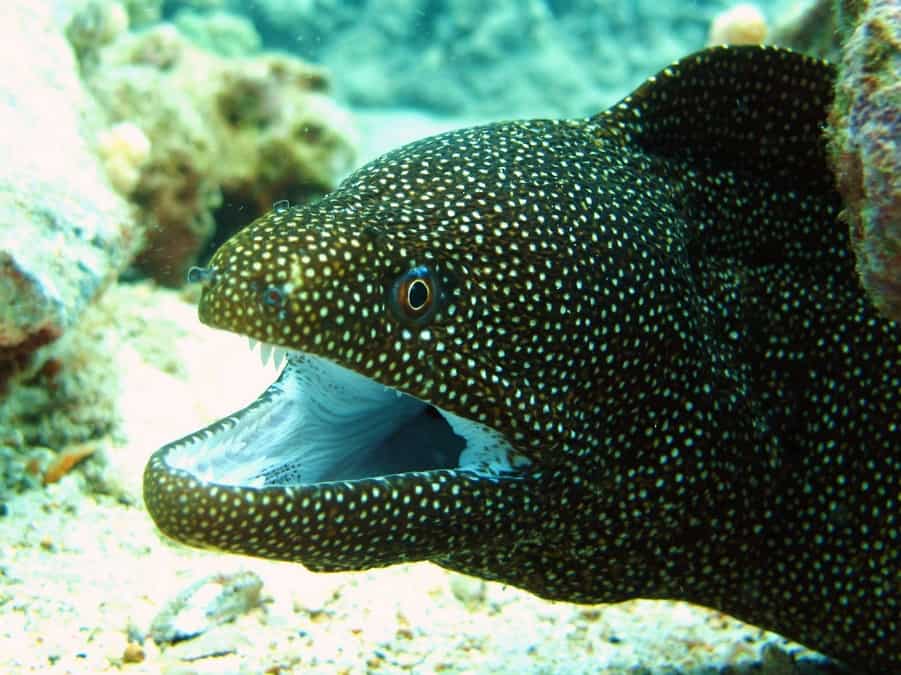
The moray eel is somewhat similar to a snake, its length reaches 2 meters, and its weight is 45 kilograms. It has smooth skin, no scales, a large head, small eyes, and a huge mouth. By the way, it is always open and looks quite intimidating. But the animal is quite peaceful and will never attack a person if he /she does not provoke it.
People often try to touch them; put their hands in the hole where they live; swim up to them or shoot. In this case, the moray eel will squeeze hard into the body and clench its jaws. Its bites are terrible, often it is necessary to amputate hands or feet if the animal bit into the limb. The body of the moray eel is covered with mucus, and when it enters the wound, it acts as a poison. Its blood is also poisonous. Moray eels are common in the waters of the Pacific Ocean.
8. Stingray
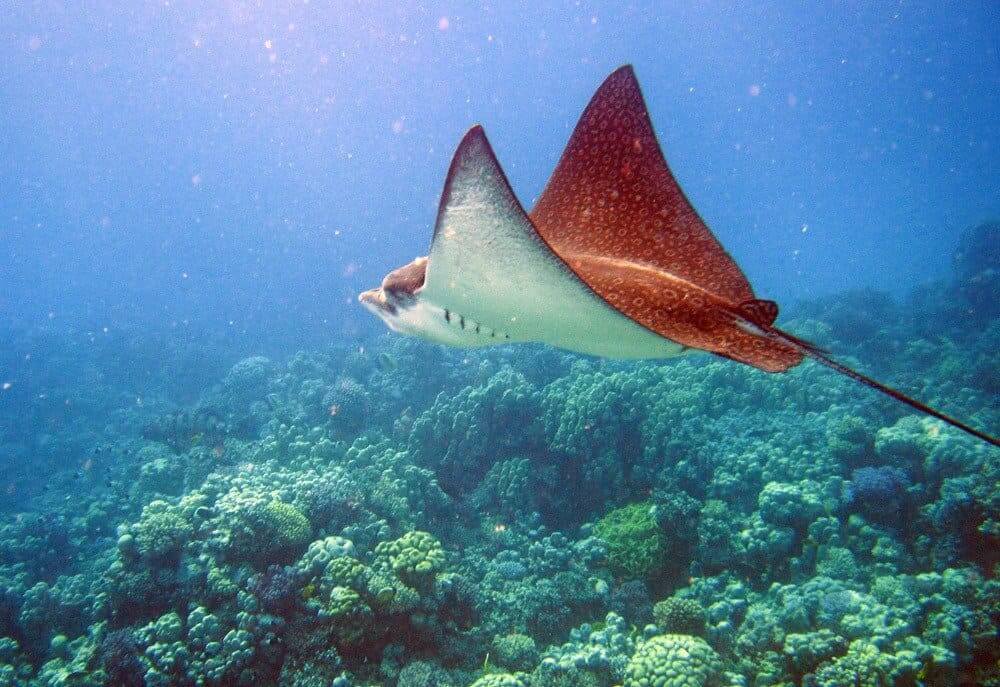
Stingray has a very unusual appearance. It is flat, its body shape is round or diamond-shaped. They are difficult to detect, as the color of the upper part of them merges with the environment. They come in different colors, depending on their living space. There are many varieties of stingrays, but humans most often meet tail breakers.
They have a long tail, at the end of which there are spikes with poison. It hits the tail like a whip, can damage a wetsuit or a boat, not to mention the human body. After a bite, a person feels pain, then nausea, dizziness, and blood pressure drop occur. If the stingray has damaged the stomach or chest, it can be fatal. Another type of stingrays is electric, they can produce a current that is enough to stun a person. Stingrays exist in absolutely all seas and oceans.
9. Sea snake
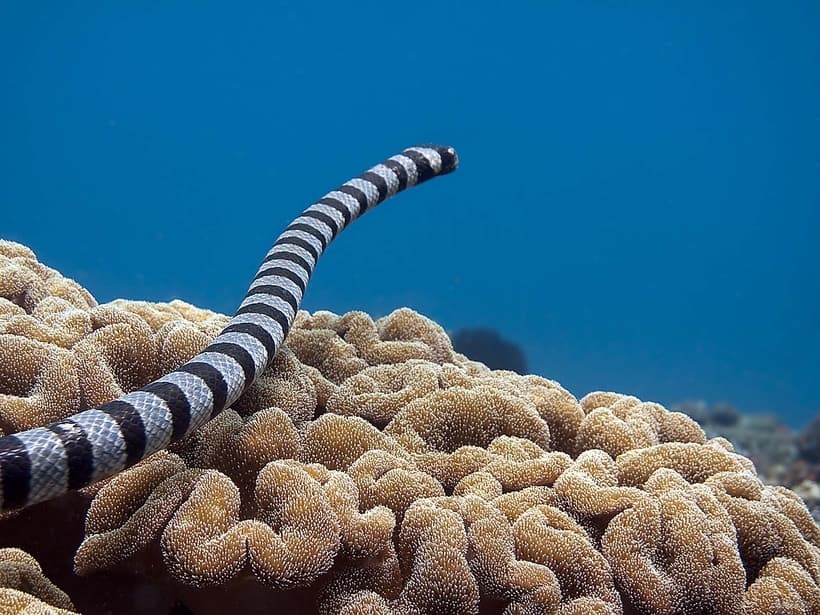
Sea snakes are diverse, there are 48 species in total. You can recognize them by the flattened body from the sides. The nostrils are located on the top, they stick their head out of the water and breathe. Snakes are dangerous for their venom, their bite is paralyzing, although completely painless.
It contains substances that paralyze the nervous system. After some time, coordination of movements is disrupted, convulsions occur. After 7 hours, paralysis of the lungs occurs, the person dies. The habitat consists of all the seas of the Pacific and Indian Oceans. If you notice a sea snake nearby, try not to move, then it may not pay attention to you.
10. Stonefish
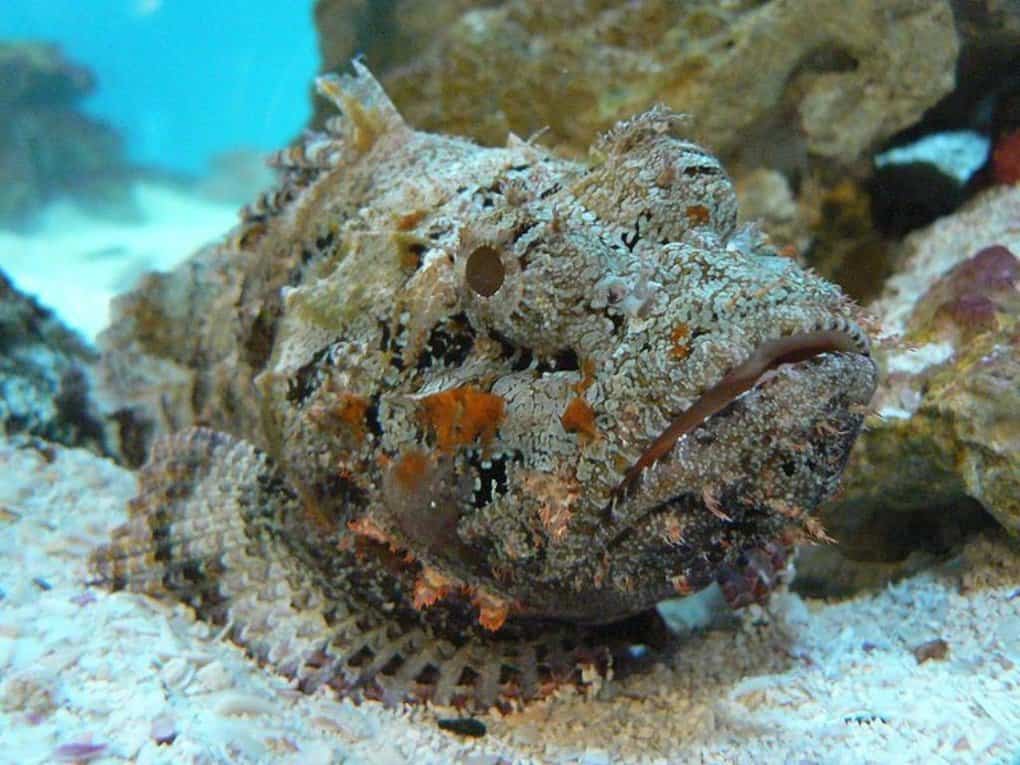
This is the most poisonous fish, its bite is deadly. It is small in size and can reach up to 50 centimeters in length. It is distinguished by a large head, small eyes, and a huge mouth. The body is covered with bumps. The fins are located on the back. This is where the deadly poisonous spikes are located, there are 12 of them in total. In most cases, people provoke a bite if they step on or touches the fish. In response, it stings with its sharp spikes.
Immediately after the bite, severe pain is felt, accompanied by painful shock, loss of consciousness. Even after a few minutes, a person may experience cardiac arrest or paralysis. If the amount of poison is small, the bitten part of the body will turn blue and swell. With the help of doctors, there are chances for recovery, but often a person after meeting with a stonefish remains disabled. They live in the Indian and Pacific Oceans.
